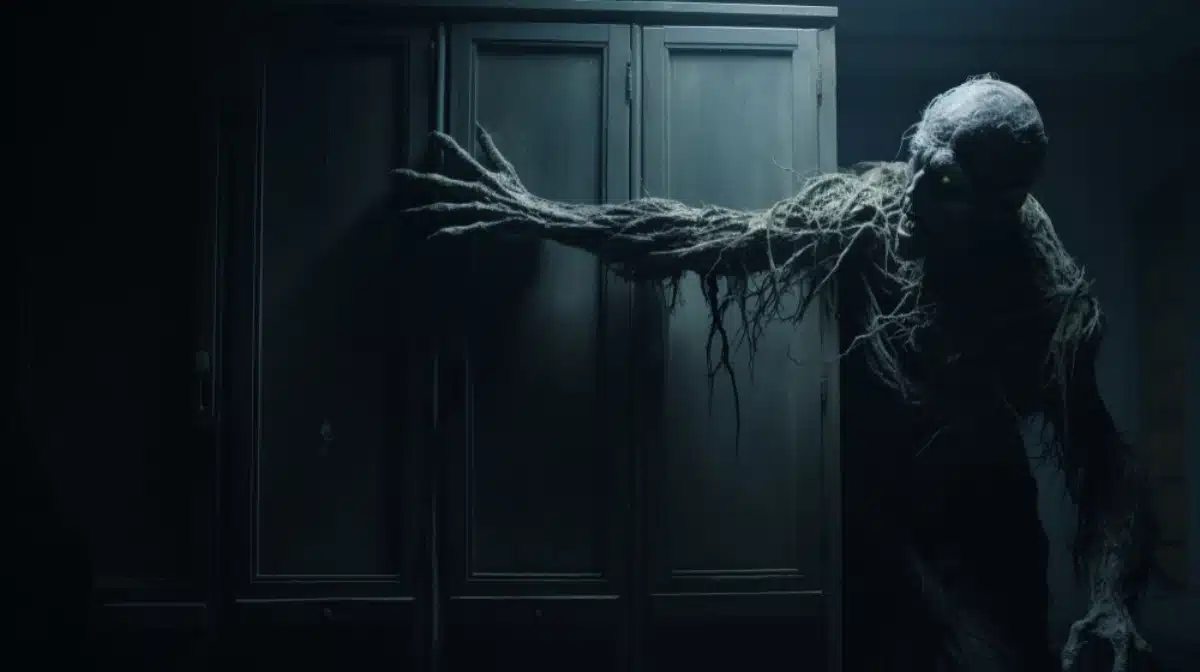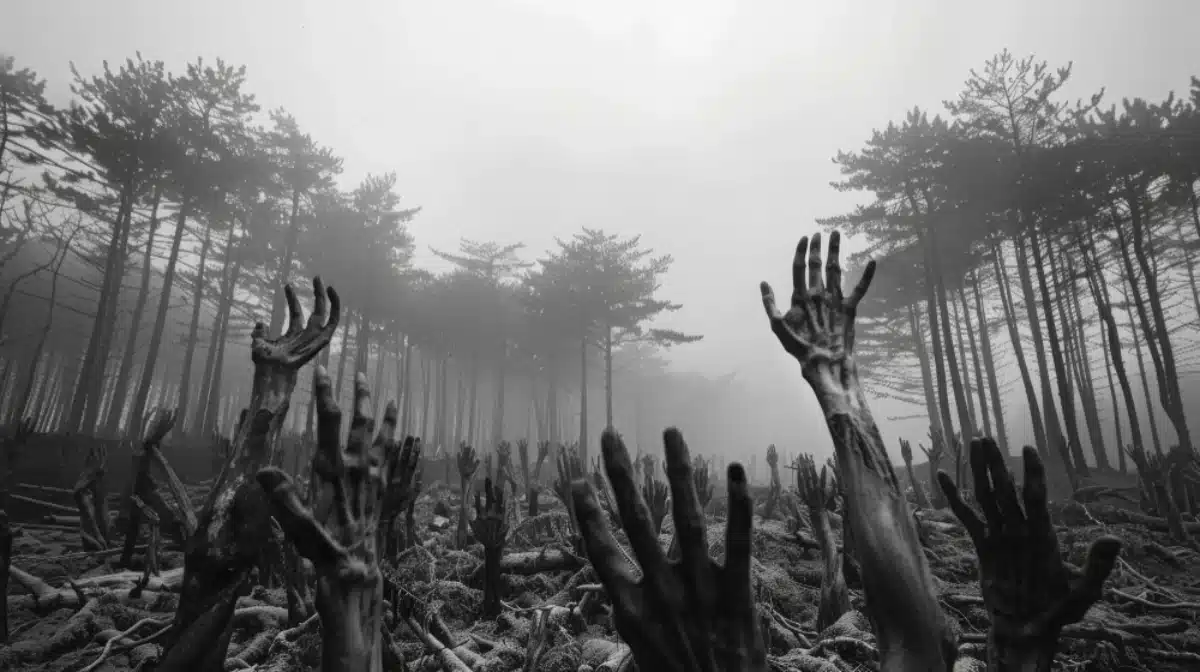Since ancient times, Fear has been a central emotion in artistic creation. Humans have represented their fears in cave paintings, ritual masks and sculptures of terrible gods. With the passing of the centuries, the horror moved to the canvases and later to narrative means such as the comic, where he found an ideal space to expand.
Graphic art allowed to explore the grotesque and the disturbing without restrictions, creating a new way of connecting with the viewer. Within these manifestations, works such as Uzumaki manga They became a reference to understand how visual horror can shake the reader.
Obviously, it has been made clear that drawing can transmit so much or more fear than traditional cinema or literature. Thus, the graphic narrative was consolidated as a means capable of generating experiences as intense as any other artistic expression.
What works of art represent fear?
Art has always been a mirror of collective emotions. Fear, in particular, has manifested at different historical moments:
- In the Middle Ages, the representations of hell in fresh and churches showed demons devouring souls, a moral and religious warning.
- In the Renaissance, although beauty predominated, disturbing paintings such as “The Garden of Delicias” of Hariomus Bosch also emerged, where hybrid creatures caused bewilderment.
- In Romanticism, works such as “The Walker on the Sea of Clouds” by Caspar David Friedrich transmitted the smallness of man in front of the unknown.
- Already in the twentieth century, painters like Francis Bacon shaped distorted faces and fragmented bodies that embodied modern anguish.
In each era, horror found its way of becoming visible. It was not just scaring, but reflecting what societies feared: divine punishment, supernatural or even the human condition itself.
The beginnings of horror in the Enlightenment
Before the comic industry existed as such, the engravings have already fulfilled a narrative function. Artists such as Francisco de Goya in his series “The whims” and, above all, “The disasters of war”, showed scenes that range between tragic and grotesque.
In the nineteenth century, the Enlightenment accompanied stories of literary terror. Edgar Allan Poe works were published with images that intensified their dark atmosphere. Later, in the newspapers and magazines of the twentieth century, the first horror comics began to emerge with pulp dyes, full of monsters and murderers.
The rise of horror comic in the twentieth century

With the consolidation of the comic as a mass medium, especially in the United States, publications that exploited the macabre emerged. Editorials such as EC Comics launched titles that included zombies, vampires and serial killers, unleashing so much fascination as controversy.
However, censorship forced to limit these publications. It was then that Japan and Europe found new paths for graphic horror, each with their own styles. While in Europe he opted for an expressionist stroke, in Japan the artists developed a more visceral language, which would eventually become In a world reference.
Japan and the transformation of graphic terror
The Japanese manga took influences from local horror cinema, the Kabuki Theater and folk literature. Authors like Kazuo Umezu introduced Stories of ghosts and curses that marked generations of readers.
Later, Junji Ito emerged, who revolutionized the genre with an aesthetic that combined the thorough with the disturbing. His inexplicable curses, bodily deformations and collective obsessions positioned him as a key figure.
Works such as “Tomie” and above all “Uzumaki” brought to the extreme the idea that graphic horror not only seeks to scare, but also deeply bother.
What are the 10 best works of graphic horror art?
Although making a list always implies debate, several works have left an indisputable footprint in the industry:
- “Such from the Crypt” – pioneer in the American horror comic.
- “Creepy” – a magazine that promoted the Macabra narrative in the sixties.
- “Hellboy” by Mike Mignola – a unique mixture of mythology, action and horror.
- “Sandman” by Neil Gaiman – although closer to dark fantasy, redefined the gloomy in the comic.
- “Crossed” by Garth Ennis – extremely violent, led the genre to the limit.
- “From Hell” by Alan Moore – a reinterpretation of Jack's crimes the stripper.
- “Locke & Key” by Joe Hill and Gabriel Rodríguez – a contemporary story of haunted houses.
- “Tomie” by Junji Ito – The endless story of an immortal woman who causes madness.
- Junji Ito Uzumaki – the spiral as a symbol of inevitable terror.
- “30 Days of Night” – Vampires in a town without sun, a terrifying premise.
Each of these works showed that graphic horror can be as diverse as cinema or literature.
Grotesque artists and their contribution
The question about who some grotesque artists are leading to names that have made horror their personal seal. Among them stand out:
- Hariomus Bosch, whose medieval surrealism filled the canvases of impossible monsters.
- Francisco de Goya, with his nightmare visions in “Saturn devouring his son.”
- Edward Gorey, Macabra Enlightenment Master with an apparently childish style.
- HR Giger, creator of the biomechanical creatures that inspired “alien.”
- Junji Ito, whose detailed line manages to bother, even without resorting to explicit violence.
These artists show that the grotesque can be as powerful as the beautiful, and that Fear is a legitimate artistic emotion.
Is terror a topic in art?

Definitely yes. Terror in art is not reduced to a minor genre, but works as a vehicle to explore the unknown. It represents what is beyond reason and what society fears accepting. Terror too It serves as catharsis: When observing a disturbing painting or reading a disturbing comic, the viewer faces his own fears in a safe space. So, Art not only terrifies, also releases.
The permanence of horror in visual culture
Today, graphic horror works influence cinema, series and even video games. The monsters who previously lived on the pages of a comic now come alive in audiovisual adaptations. Recent examples show how stories of Junji Ito or Alan Moore are still a reference for contemporary creators.
This shows that fear does not go out of style, it only changes shape. The black and white line of a comic can be as shocking as the most sophisticated special effects.
Final perspective
The graphic horror works that marked the industry left a difficult mark to erase. From Goya's engravings to the spiral stories of Junji Ito, fear has been a creative engine capable of generating unforgettable images.
The art of terror reminds us that not everything should be beautiful to be valuable. The grotesque, the strange and the disturbing also have a place in cultural history. Thanks to this, generations of readers and spectators continue to face their fears through drawn pages, finding in the sinister a form of reflection and, paradoxically, of company.

Post a Comment